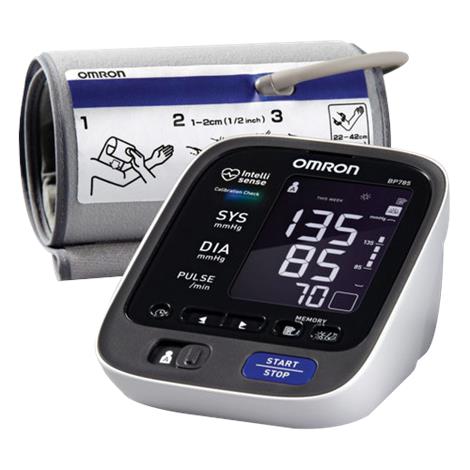
A blood pressure cuff, also called a pressure measuring cuff, or blood pressure cuff monitor, is a specially designed device usually worn over the arm, designed to monitor blood pressure while the cuff is inflated and collapsed in a controlled fashion, and is connected to a computerized system. This type of cuff is normally connected to an ECG monitoring unit, and the cuff monitor measures the heart rate, blood oxygen saturation, blood volume and pressure of the arterial walls.
Most monitors come with pre-loaded profiles for use by a patient
The cuff monitoring system uses digital reading to determine the rate of increase or decrease of arterial pressure, which is then displayed on a computer monitor in the patient's hand. The monitors are commonly used to treat hypertension in children and in adults, but they are also used to monitor patients suffering from other ailments such as dyspnea and respiratory distress. Blood pressure monitoring systems can be used for patients to diagnose various diseases such as angina, heart failure, stroke, lung disease, kidney problems, diabetes and heart arrhythmia. Monitoring devices are often recommended by doctors in order to keep track of the vital signs of patients and to determine their treatment. Blood pressure monitoring devices are now widely used in hospitals and health care centers.
Blood pressure cuff monitors are a very helpful device in many ways. The major function of the monitor is to keep track of blood flow through the body, by allowing the patient to continuously monitor his/her blood flow by placing one cuff around his/her upper arm and monitoring the results of a digital reading. Most monitors are made with the purpose of monitoring arterial blood flow, but there are some devices that also work in monitoring venous blood flow.
Monitors of any kind can provide useful information to the medical practitioner who is monitoring the patient's condition. Some monitors are available with a display screen of some kind to display the digital readings on the monitor's screen, so that the monitor user can make the necessary calculations of the patient's blood pressure or other vital sign measurements.
Blood pressure monitors have many different types and models, including a basic model with a simple needle attached to a flexible tube which allows the needle to inflate and deflate the cuff. to measure the blood's pressure. Another kind is the portable monitors, which are normally used by people who have a mobility problem because they can easily fit the cuff around their arm.
Monitors can be either manual or electronic
The manual models are the most common type, as they are easier to use and more convenient. However, a manual monitor has some disadvantages such as that it can't measure a patient's arterial blood flow if it is positioned improperly, and it requires a physician's approval to be used in certain circumstances.
Electronic monitors, however, are much easier to use than the manual monitors and are considered to be more sophisticated. Electronic monitors are generally attached to the patient's arm by means of a small device that fits in the finger. They are portable, as well as having automatic inflation and deflation of the cuff. They can also measure and calculate the pressure of arterial walls with a minimum of effort.
These monitors are used in many clinical settings and are recommended by most physicians and medical professionals as a useful tool. Digital monitors offer a better accuracy, as compared to traditional blood pressure monitors, which is important in monitoring the correct levels of blood pressure in many patients. If a patient's arterial walls are too thin, they may display the inaccurate level of pressure as indicated by the digital reading, which may lead to errors in treatment.